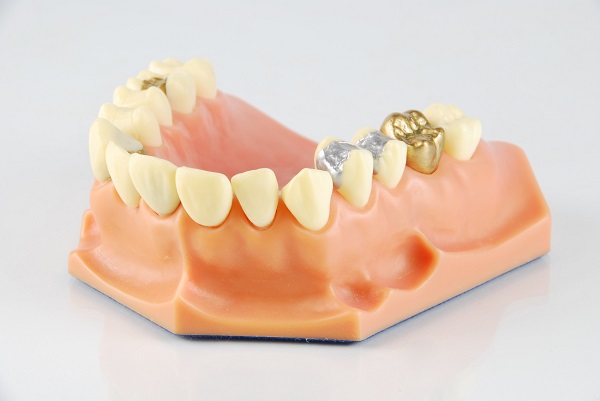
Away With Amalgam
One of the most common dental procedures is having a cavity filled. Chances are, you’ve even had a few filled in your lifetime. Cavities are a serious problem caused by harmful bacteria in our mouths that weakens enamel and causes tooth tissue to decay. They can be extremely painful and result in tooth loss. For more than a century dentists have been filling cavities with silver amalgam, but there is a better option in town. Composite resin is a tooth-colored alternative material that is much better suited to halt the progression of tooth decay. It’s one of the reasons why many dentists are doing away with amalgam.
What is Amalgam?
Dental amalgam is one of the oldest restorative materials in dentistry. It has been used in dental practices around the globe for 165 years to fill cavities in patients. It was first recorded in medical history in 659 AD by a Chinese practitioner, Su Kung. In 1578 a German physician recorded the recipe (100 parts mercury, 45 parts silver, 900 parts tin) and its usage as a dental filling. In 1826, the French where mixing silver coins with mercury and described their dental filling as a, “silver paste.” When the concoction made it to the United States, two brothers who had no dentistry background at all were performing cavity fillings with their, “Royal Mineral Succedaneum.” This unregulated, uneducated practice caused the American Society of Dental Surgeons to consider the use of amalgam malpractice in 1845. However, in 1877 J. Foster Flagg published his five-year clinical observations of the alloy and changed attitudes towards the filling material. It wasn’t until 1895 when G. V. Black investigated the use of amalgam constituted of 68.5 percent silver, 25.5 percent tin, 5 percent gold, and 1 percent zinc, integrated with cavity treatment and design that the use of amalgam was accepted by the dental community.
Today amalgam fillings are made with a combination of silver, mercury, tin, copper, and small amounts of zinc, indium, or palladium. This alloy is suitable to fill cavities because it is pliable and can be effectively used to fill the space left after decayed material is removed from a cavity site. It is also effective because it is durable and can withstand the rigors of chewing. Additionally it has been an economical choice for patients and dentists alike for many years.
Why is Amalgam Controversial?
Amalgam has been controversial for some time. The use of mercury is at the center of the debate. We come into contact with mercury in small amounts every single day. However, in large amounts mercury can build up in the organs and become toxic. Toxic amounts of mercury can cause, irritability, memory loss, anxiety, fatigue, and headaches. Patients are worried that the amount of mercury is released into the body from amalgam fillings can cause them harm. While people who are allergic to mercury may have an adverse reaction to this alloy, no studies have significantly found that amalgam as used in dental restorations to cause any serious diseases or conditions
Why We Choose Composite Resin
While silver fillings have served the dental profession for over a century, times have changed. New technologies are much better suited to fill cavities without any adverse effects. At Artistic Touch Dentistry we prefer to use tooth-colored restorations, or composite resin, to fill cavities and relieve pain associated with decay for several reasons.
Silver fillings are durable and can withstand bite force, however metals are prone to expand and contract and actually weaken the tooth structure causing new cracks. Further, over time the edges of amalgam fillings can begin to break down, and even fall out of the cavity it intended to fill. This leaves the tooth susceptible to further decay.
Composite resin is bonded to teeth with amazing new technology. They fit better to natural teeth and are less prone to breaking or wearing down. When preparing a tooth for a composite resin filling Dr. Brazdo only has to remove the decayed portion of the tooth. With a silver filling, more tissue must be removed. Composite fillings are a much more conservative procedure.
Our final reason for preferring composite fillings to amalgam is because they are above and beyond more aesthetically pleasing. Tooth-colored fillings give the appearance of no filling at all and can help patients retain self confidence that would be taken away with a silver filling.
If you have any questions about why we love tooth-colored fillings or why we do away with amalgam fillings, give us a call today. And, if you have a cavity that needs to be filled, schedule an appointment with Dr. Brazdo today!

